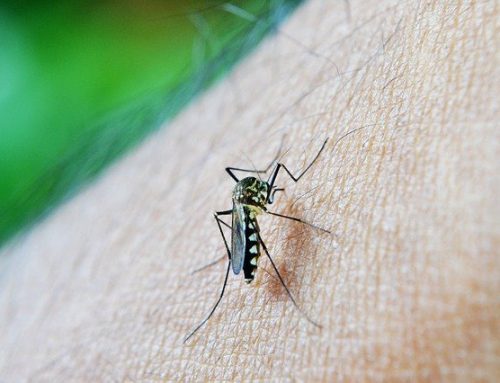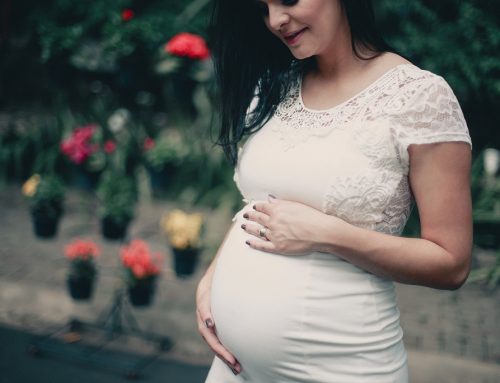As every new mother will testify, newborn babies are terrifying. They’re tiny and delicate, so you want to do everything in your power to protect them. Especially, from that army of germs lurking around the corner, ready to launch an attack. Newborns require extra care to avoid their fragile systems from catching fatal infection or illnesses. Your paediatrician will advise you to maintain certain hygienic standards during the first year of your baby’s life. Sterilising baby bottles and other feeding equipment is a part of that regime.
Should I sterilise baby equipment
When your baby leaves the safety of the womb, he is in for a rude shock. The outside world is scary and unknown… it’s also filled with microorganisms that could affect your little one’s still-developing immune system.
If you plan on feeding expressed breast milk or formula, you need to be careful. Whether you choose chamach vati or a feeding bottle, you need to figure out the right cleaning methods to clean the baby feeding items. Also, right sterilisation methods to eliminate microorganisms and germs that might be left behind even after cleaning. Bacteria and virus can survive despite washing the baby bottles with soap and water. These could make their way into your baby’s gut, causing diarrhoea and vomiting.
Not just feeding bottles, even baby’s clothes and bedding can be a breeding ground for infection if not sanitised well. Hence in the early weeks of a child’s life, his surroundings should be hygienic.
Sterilisation is essential in the first 3-6 months of the baby’s life when even common infection can be fatal for the newborn.
As a baby grows and becomes mobile, he likes to put things in the mouth. He is exploring, right! Be it toys, household items or anything that a baby can reach or lick. It is impossible to sterilise the baby’s surroundings completely. And in many cases not advisable either. And not every item can be sterilised. So as the baby grows, the sterilisation gradually becomes less effective.
Generally, after 1 year of age, most doctors and parents recommend stopping sterilising baby equipment.
How often should I sterilise baby items
Most doctors and parents agree that you should only disinfect until your baby is a year old. After that, your baby’s immunity is stronger, and mild soap and water are sufficient to clean the feeding utensils.
How often to sterilise the baby equipment? Some parents believe thorough sterilisation once a week is enough. Some doctors are of the view that you should sterilise all feeding utensils every day or after every use.
Speak to your paediatrician about what he feels is best for your baby. For babies under three months or born prematurely, you may need to sterilise their feeding equipment after every use.
What baby items you should sterilise
Baby items that go in the mouth (by intent and design) are disinfected. Usually, many paediatricians recommend sterilising feeding equipment (bottles, cups, cutlery, etc.). Or any reusable baby product involved in expressing, making, storing or feeding formula/milk (breast milk or animal milk).
Usually, the following items are safe to sterilise. However, check manufacturer recommendation before sterilising the baby products:
- Baby feeding bottles
- Bottle nipples
- Chamach vati used for feeding
- Pacifiers (we do not recommend using them)
- Breast pump and accessories without electrical components
- Baby cutlery
Should you sanitise baby clothes
Newborn clothes are easily and frequently soiled due to milk spill, vomit, pee, poop, medicines, or food when they are new to solids. If not washed/sanitised properly the clothes can become the breeding ground for micro-organisms.
Even when kids are old enough to play outside or throw a tantrum, their clothes touch many floors, gardens, muddy patches, busy walkways or even the roads! On occasions like these, you may want to get an extra bit of sanitisation after washing the clothes.
Many parents in India add a trickle of Dettol or any favourite brand of antiseptic liquid to soak a newborn’s clothes, or kid clothes that touch suspicious surfaces. However, most doctors recommend against the use of any such additives to baby’s clothes washing routine. These chemicals can irritate a newborn’s skin.
Baby items you shouldn’t sterilise
While sterilising is vital for your baby’s health, there is a thing as too much. Exposure to germs and dirt help strengthen the immunity system. So even if you are tempted, avoid sterilising baby’s surroundings all the time and every baby product (unless medically recommended).
Remember not every baby product should be sterilised. Not every baby product can be sterilised. Avoid sterilising the following items:
- Toys
- Any baby product or feeding accessory with an electrical component
- Toothbrush
- Teether filled with liquids (avoid using store-bought teether)
While sterilising these products is not usually recommended, ensure these items are cleaned as per manufacturer recommendation, to remove dirt or grime.
How to sterilise baby equipment
Depending on the type of baby product you intend to sterilise, different sterilisation methods are available. You can adopt:
1. Steam steriliser:
These are electrical devices that generate steam to kill any bacteria or harmful microorganism present on the baby utensils.
Pros:
- Convenient
- Can be used for plastic, glass and steel utensils
- No fear of burning/melting of plastic items being sterilised
Cons:
- Expensive
- Bulky takes up space
- Not needed after the baby is a year old
- Requires thorough cleaning & drying to ensure no mould formation
- Requires additional effort of descaling
How to use:
- Clean the bottles, feeding items, etc. with soap & water
- Place item in the steamer
- Add water as instructed and switch on
Note: Always follow the manufacturer’s instructions when using the steriliser
2. UV steriliser:
It uses UV rays to eliminate the germs effectively. Since it doesn’t use water, you can sterilise battery-operated equipment too.
Pros:
- It is easier to use than steam sterilisers
- Convenient, no need to add anything
- Can sterilise array of items including feeding equipment, mobiles, baby products with electrical components, etc.
Cons:
- Expensive
- The parents might get carried away and sterilise everything the baby touches
- Not useful after the baby is a year old
How to use:
- Thoroughly clean the items to be sterilised
- Place, cleaned and dried items inside the machine
- Switch on the device and keep items for sterilising as per instructions
Note: Always follow the manufacturer’s instructions when using the steriliser
3. Boiling water:
Probably the oldest household technique for sterilising baby items. Here, you don’t need to buy anything new. Just need clean water and a utensil to heat it to boiling temperature.
Pros:
- Cheaper option; no additional investment required
- Tried and tested technique used by earlier generations
- Approved by most manufacturers of baby equipment
Cons:
- Requires monitoring to avoid burning due to overheating
- Time-consuming
- Not suitable for baby items with electrical components
How to use:
- Hand wash the equipment with mild soap and water
- Fill up with water in steel or any metallic pot such that all equipment can be covered
- Place the pot on stove and heat till water boils
- Insert items to be sterilised in the boiling water for 10 minutes
- Switch off heat; wait for the water to cool a bit before removing items
- Gently remove items, use a clean & sterilised tong for removing items
- Lay the items on a clean surface or cloth for air-drying
4. Ironing:
Surprised? A hot iron is not something that comes to anyone’s mind when they think about sterilising baby items. While a hot iron may not be useful to sanitise any plastic or metallic item, it is a great way to disinfect baby clothes.
Pros:
- Highly recommended by childcare experts during infancy
- A safe & chemical-free way to disinfect
- Prevents mould formation on clothes by removing traces of moisture
- Safe alternative to disinfecting clothes when sunlight is poor
- No additional investment (if you already have an iron at home)
Cons:
- Time-consuming
- Useful only for sanitising clothes
- Can marginally add to the electricity bill
How to use:
- Plugin the iron and switch it ON, select the heating as the cloth type
- Move the iron in a firm, short regular movements over the clothes
- Avoid ironing directly over the prints on the fabric
5. Sunlight:
World’s oldest disinfectant! When it comes to non-feeding baby items like clothes, reusable diapers, certain baby gears, baby furniture, wooden toys (or even soft toys), baby bedding, etc. sunlight is a safe bet to kill micro-organisms, dust-mites as well as get rid of funny odour! In fact, many Indian households have the cleaning ritual to sun bedding, various stored items once or twice a year.
Pros:
- Cheapest and the easiest way to sterilise
- No investment required
- Can sterilise an array of baby products including clothes, bedding, baby gears, etc.
Cons:
- Not available during nights and a few months of the year (e.g. monsoon or winter)
- May not be suitable for sanitising plastic-heavy items or baby equipment with electronic components
How to use:
- Clean the item and keep it in the bright sunlight for few hours; rotate objects to ensure all parts receive adequate sunlight
- For clothes, wash clothes and dry in sunlight
Conclusion
Newborn babies are fragile and need protection from bacterial and viral infections. One way to protect them is to sterilise their feeding equipment.
Once your baby is 9-12 months old, slowly start decreasing the frequency of sterilisation and allow him to explore his environment freely. Parents usually stop sterilisation after the baby turns 6-12 months old.
It is not recommended to sterilise everything in babies vicinity as that can hamper building and strengthening of his immunity.






Leave A Comment